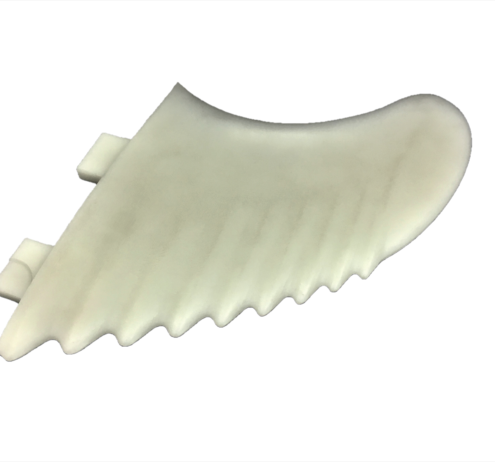Extruded Nylon 30% Glass

Extruded Nylon 30% Glass Overview
What is the Material: Extruded Nylon 30% Glass is a semi-crystalline material filled with glass.
Key Material Features: This material is beneficial in applications requiring higher strength, rigidity, and dimensional stability, while maintaining the properties of other nylon materials including the useful mechanical properties, low friction, wear resistance, and abrasion resistance.
Other Considerations: The glass filler can be abrasive to other surfaces. Extruded nylons absorb less moisture and have a melting point about 70°F higher than cast nylon.
Physical
| Property | Value | Typical ASTM Test |
|---|---|---|
| Chemical Designation | (PA-6/6) Extruded Polyamide | |
| Trade Names (®, ™) | Sustamid GF 30, Nylon 101 GF 30, Tecamid GF30, Unipa Rg-30 | |
| Filler | 30% Glass Fibers | |
| Color | Natural and Black | |
| Density (g/cm^3) | 1.36 | D 792 |
Mechanical
| Property | Value | Typical ASTM Test |
|---|---|---|
| Modulus of Elasticity (Tensile Test) (psi) | 800000 | D 638 |
| Tensile Strength at Yield (psi) | 13500 | D 638 |
| Elongation at Break (%) | 10 | D 638 |
| Flexural Strength (psi) | 19575 | D 790 |
| Modulus of Elasticity (Flexural Test) (psi) | 700000 | D 790 |
| Compression Strength: 10% Strain (psi) | 17000 | D 695 |
| Compression Strength: 1% Strain (psi) | 2900 | D 695 |
| Compression Modulus (psi) | 380000 | D 695 |
| Impact Strength (Izod) (ft-lbs/in) | 1.25 | D 256 |
| Hardness (M) | 88 | D 785 |
Thermal
| Property | Value | Typical ASTM Test |
|---|---|---|
| Melting Point (°F) | 499 | D 3418 |
| Service Temperature Continuous (°F) | 230 | |
| Service Temperature Intermittent (°F) | 338 | |
| Thermal Expansion (CLTE) (in/in/°F) | 2.70E-5 | D 696 |
| Thermal Conductivity (BTU-in/hr-ft^2-°F) | 2.71 | |
| Specific Heat (BTU/lb-°F) | 0.3 |
Electrical
| Property | Value | Typical ASTM Test |
|---|---|---|
| Specific Surface Resistance (Ω/square) | 1.00E14 | D 257 |
| Volume Resistivity (Ω*cm) | 1.00E14 | D 257 |
Other
| Property | Value | Typical ASTM Test |
|---|---|---|
| Moisture Absorption (%) (24 Hours) | 0.25 | D 570 |
| Moisture Absorption (%) (Saturated) | 0.3 | D 570 |
The data stated are typical values intended for reference and comparison purposes only. The data should not be used as a basis for design specifications or quality control. The information is provided as a guide to the best of our knowledge and given without obligation or liability. Testing under individual application circumstances is recommended.
